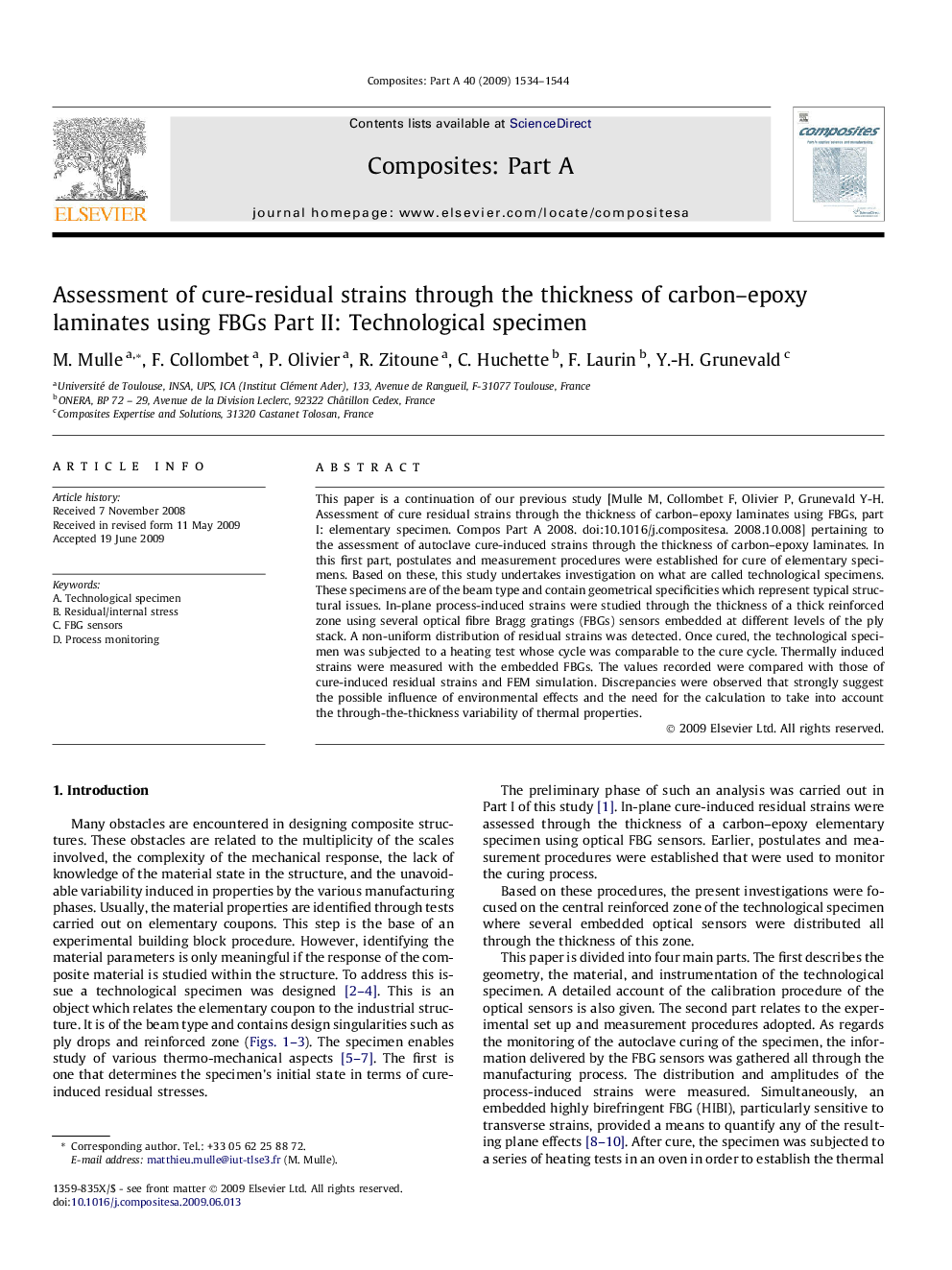| Article ID | Journal | Published Year | Pages | File Type |
|---|---|---|---|---|
| 1467219 | Composites Part A: Applied Science and Manufacturing | 2009 | 11 Pages |
This paper is a continuation of our previous study [Mulle M, Collombet F, Olivier P, Grunevald Y-H. Assessment of cure residual strains through the thickness of carbon–epoxy laminates using FBGs, part I: elementary specimen. Compos Part A 2008. doi:10.1016/j.compositesa. 2008.10.008] pertaining to the assessment of autoclave cure-induced strains through the thickness of carbon–epoxy laminates. In this first part, postulates and measurement procedures were established for cure of elementary specimens. Based on these, this study undertakes investigation on what are called technological specimens. These specimens are of the beam type and contain geometrical specificities which represent typical structural issues. In-plane process-induced strains were studied through the thickness of a thick reinforced zone using several optical fibre Bragg gratings (FBGs) sensors embedded at different levels of the ply stack. A non-uniform distribution of residual strains was detected. Once cured, the technological specimen was subjected to a heating test whose cycle was comparable to the cure cycle. Thermally induced strains were measured with the embedded FBGs. The values recorded were compared with those of cure-induced residual strains and FEM simulation. Discrepancies were observed that strongly suggest the possible influence of environmental effects and the need for the calculation to take into account the through-the-thickness variability of thermal properties.
